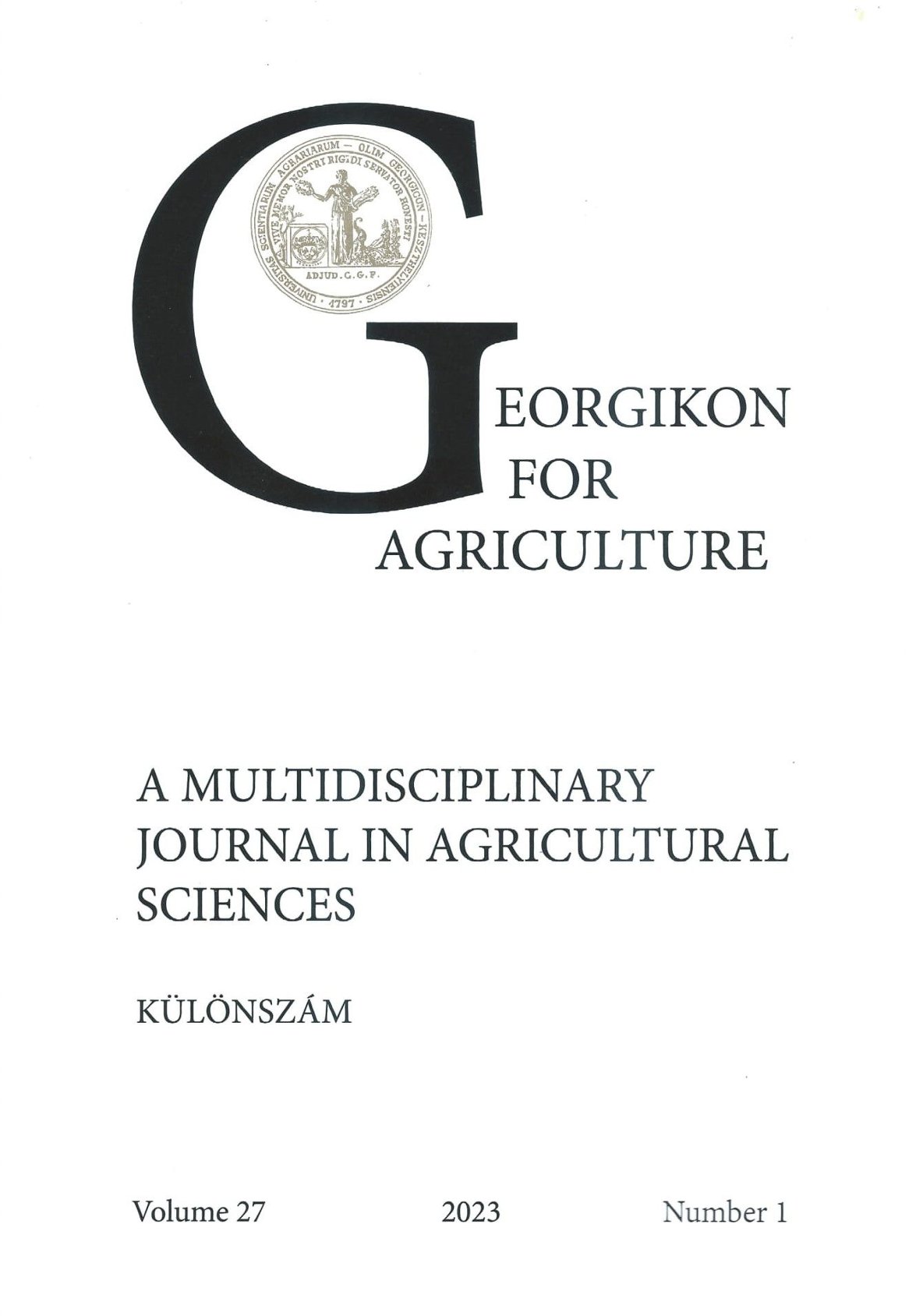Pollen-spóra interakció vizsgálata Botrytis cinerea kórokozón: egy új megközelítés előzetes eredményei
Keywords:
microbial communication, quorum sensing, spectrophotometryAbstract
There is little attention on the spore-pollen interaction, especially their background mechanisms, which microbial communications might partially explain. In this pilot study in Botrytis cinerea, we will show some first primary results, such as methodological validation and the role of some influencing factors. The preliminary results suggested valid methodological background to measure the initial growth of conidia development. Furthermore, we obtained a significant difference for the type of extract, which has a detectable time- and concentration-dependent effect. Summarizing, these results may indicate that the development of the pathogenic conidia of B. cinerea is influenced by certain regulatory molecules, which may have an analogous biological effect on the stimulatory compounds found in plant pollens.
References
Barriuso, J. 2015. Quorum sensing mechanisms in fungi. AIMS Microbiology 1(1). 37-47.
Hennebert, G. L. 1973. Botrytis and Botrytis-like genera. Persoonia 7. 183-204.
Hernandez-Albíter, R. C., Barrera-Necha, L. L. and Bautista-Baños, S. 2007. Antifungal Potential of Crude Plant Extracts on Conidial Germination of Two Isolates of Colletotrichum gloeosporioides (Penz.) Penz. And Sacc. Revista Mexicana de Fitopatología. 25(2).180-185.
Kocsis, I., Petróczy, M., Takács, Z. K. and Markó, G. 2022. Stimulation role of pollen grains in the initial development of Botrytis cinerea: The importance of host compatibility, cultivation status and pollen size. Journal of Phytopathology 170. 828- 837.
Lindsay, A. K., Deveau, A., Piispanen, A. E. and Hogan, D. A. 2012. Farnesol and cyclic AMP signaling effects on the hypha-to-yeast transition in Candida albicans. Eukaryotic Cell 11(10). 1219-1225.
Mehmood, A., Liu, G. and Wang, X. 2019. Fungal Quorum-Sensing Molecules and Inhibitors with Potential Antifungal Activity: A Review. Molecules 24(10). 1950.
Ogawa, J. M. and English, H. 1960. Blossom blight and green fruit rot of almond, apricot and plum caused by Botrytis cinerea. Plant Disease Reporter 44(4). 265-268.
Padder, S. A., Prasad, R and Shah, A. H. 2018. Quorum sensing: A less known mode of communication among fungi. Microbiological Research 210. 51-58.
Rosero-Hernández, E. D. and Echeverri, F. L. 2020. The Search for Quorum Sensing in Botrytis cinerea: Regulatory Activity of Its Extracts on Its Development. Plants 9(2). 168.
Sato, T., Watanabe, T., Mikami, T. and Matsumoto, T. 2004. Farnesol, a morphogenetic autoregulatory substance in the dimorphic fungus Candida albicans, inhibits hyphae growth through suppression of a mitogen-activated protein kinase cascade. Biological and Pharmaceutical Bulletin 27(5). 751-752.
Song, X., Bera, S., Yao, Y., Ferguson, D. and Li, C. 2014. Tree barks as a natural trap for airborne spores and pollen grains from China. Chinese Science Bulletin 59(19). 2331-2339.
Downloads
Published
Issue
Section
License
Copyright (c) 2023 Kocsis Ivett, Petróczy Marietta, Markó Gábor

This work is licensed under a Creative Commons Attribution-NonCommercial-NoDerivatives 4.0 International License.
Cikkre a Creative Commons 4.0 standard licenc alábbi típusa vonatkozik: CC-BY-NC-ND-4.0. Ennek értelmében a mű szabadon másolható, terjeszthető, bemutatható és előadható, azonban nem használható fel kereskedelmi célokra (NC), továbbá nem módosítható és nem készíthető belőle átdolgozás, származékos mű (ND). A licenc alapján a szerző vagy a jogosult által meghatározott módon fel kell tüntetni a szerző nevét és a szerzői mű címét (BY).




